Connecting the Spoken and Written Word
First Steps to Learning to Read
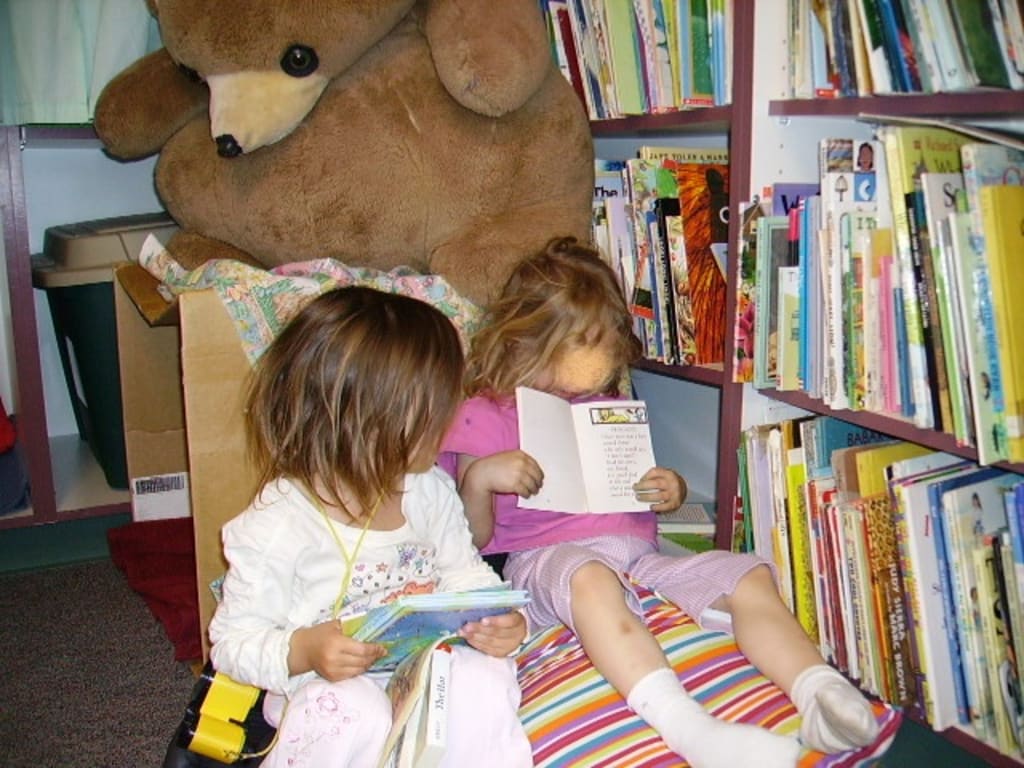
Children need lots of concrete activities that connect the spoken and written words before they can be expected to learn to read. They need to see the connection between their own spoken words and those written on paper. Here are some of my favorite ideas for making those connections with children.
First and most important they need to have books read to them! Ideally, they should have a favorite adult read a couple books to them every day from the time they are born.
Mem Fox, a children’s book author says in her article ‘Ten Read Aloud Commandments’ (https://memfox.com/for-parents/for-parents-ten-read-aloud-commandments/)
“Read at least three stories a day: it may be the same story three times. Children need to hear a thousand stories before they can begin to learn to read. Or the same story a thousand times!”
Children need to listen to stories, to explore books and to tell their own stories to a fascinated audience before they can learn to read.
Children don’t always realize they have their own stories to tell. I once attended a workshop in which we were taught to tell our own stories to the children as a means of modeling so that the children could find their own voices. To do this in a classroom, I set up and art easel during circle time with a large sheet of paper and a selection of markers. When working with somewhat older children one to one, we simply sat at the table and worked together on a story.
On the paper I began to draw a picture and as I drew, I told the story of what I was drawing. The stories need to be about every day, simple things that happen around home. With that in mind I drew a chicken pecking on my front door and talked about Henny -Penny, the chicken that liked to come visit the house and always knocked. I drew a picture of my red truck and of my husband and his chain saw and told them about how he cut our firewood and loaded it in the truck. I drew a picture of my dog chasing a ball and talked about how crazy she was about playing fetch. As I finished each story, I also wrote the words beside the picture and read them again.
Simple stories, but as I drew, and talked and wrote the words for them, the children began to make the connection that my words and pictures had meaning and that they could be written down.
I then set up a writing center with paper and markers and invited the children to tell their own stories. I offered to write down what the children said about their pictures.
Another story connection is an activity that the children always enjoy. I have them choose a picture, old calendars and magazines are great for this. They glue the picture on a large sheet of paper, and then dictate a story about the picture that I write down for them. I then read the story back to them while pointing to the words so they can see them written down.
More connections can be made with circle stories. In this activity someone in the circle starts a story and then each person has a turn to add to the story. While the children are telling the story, I write down their words and then we illustrate it and hang it up where the children can tell the story over and over again. Following is a circle story told by a group of seven three and four-year olds.
“The lion was, went falling a long, long, long way. Then he came back to pick up his baby. He found his babies. He has big legs. His babies have small legs. Then they walk. Then the lion tried to chase the giraffe, then a zebra came running up. Then the baby got lost again. They got dots on it. And the baby has little legs and this tiger has a big, big tail. This baby has a little tail that won’t come off.
This will be a baby; the baby will see his Mommy. When he goes to eat and he ate all the penguins. And that was everyone’s.
Long, long ago he (a Dinosaur) took a long hike. He ate a person. Then he saw his babies. They’re fighting. They messed up the whole TV because their Mom is too big. She had to sleep upstairs. She broke the floor. She got a pineapple and then a splinter in her foot.
The tiger went away faster and the Mom went with her and brought her back home to the mountains. She said, “No running back away. Oh, you’re so naughty.”
The tiger went to town. He went walking around Johnny’s head.
The lion found his babies, then he went home.
The lion met a girl and they got married and lived happily ever after.
The End”
The children then illustrated the story, here are some of their drawings.
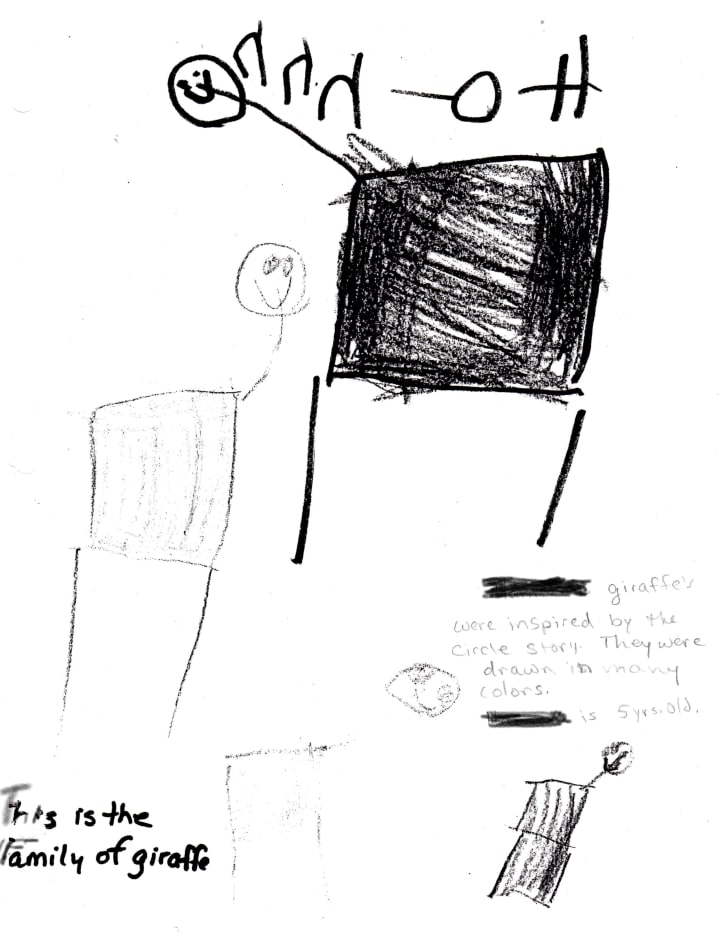
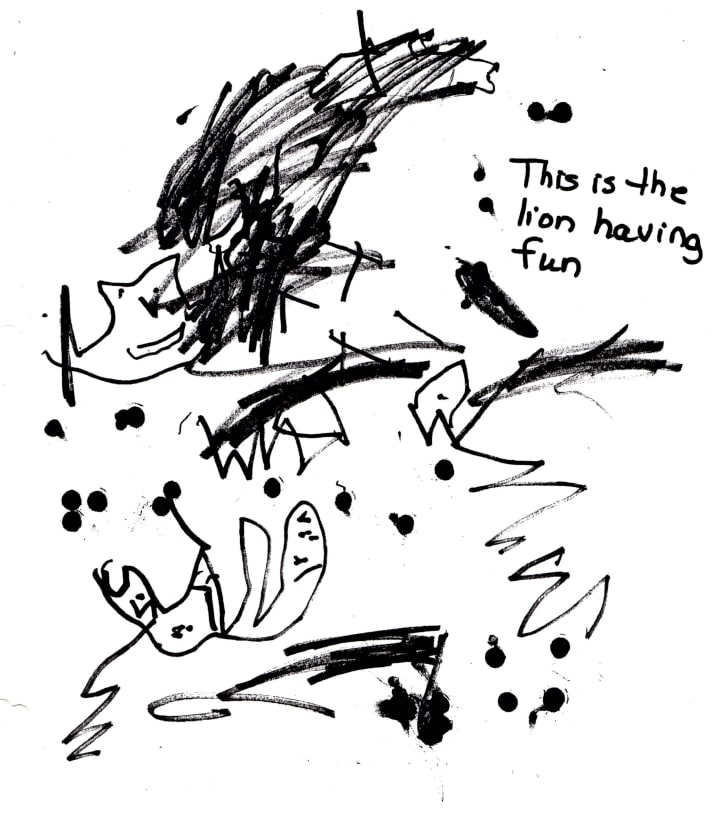
There are many ways to illustrate these connections between the spoken and written words. It is important that the children find their voice and tell their own stories along with the books they are reading. They need to see, feel, and hear thousands of words, thousands of stories before they can learn to read. All those connections between brain cells have to grow and develop and giving the children stories is like giving nourishment to their brains. It helps the connections grow and increases their ability to learn.
Connections, relationships, finding their voice, listening to and telling stories all are at the heart of making spoken and written word connections.
About the Creator
Morgan Alber
I taught preschool and reading for 19 years in a small rural school in Southern Colorado.
I have a B.S. degree in Biology, an AA in Anthropology, and a Master Herbalist Degree.
When I am not playing with my granddaughter, I love to read.

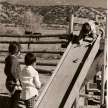


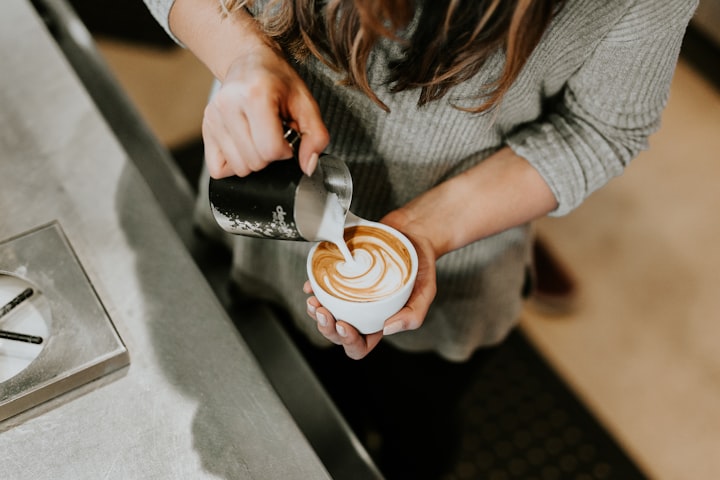

Comments
There are no comments for this story
Be the first to respond and start the conversation.